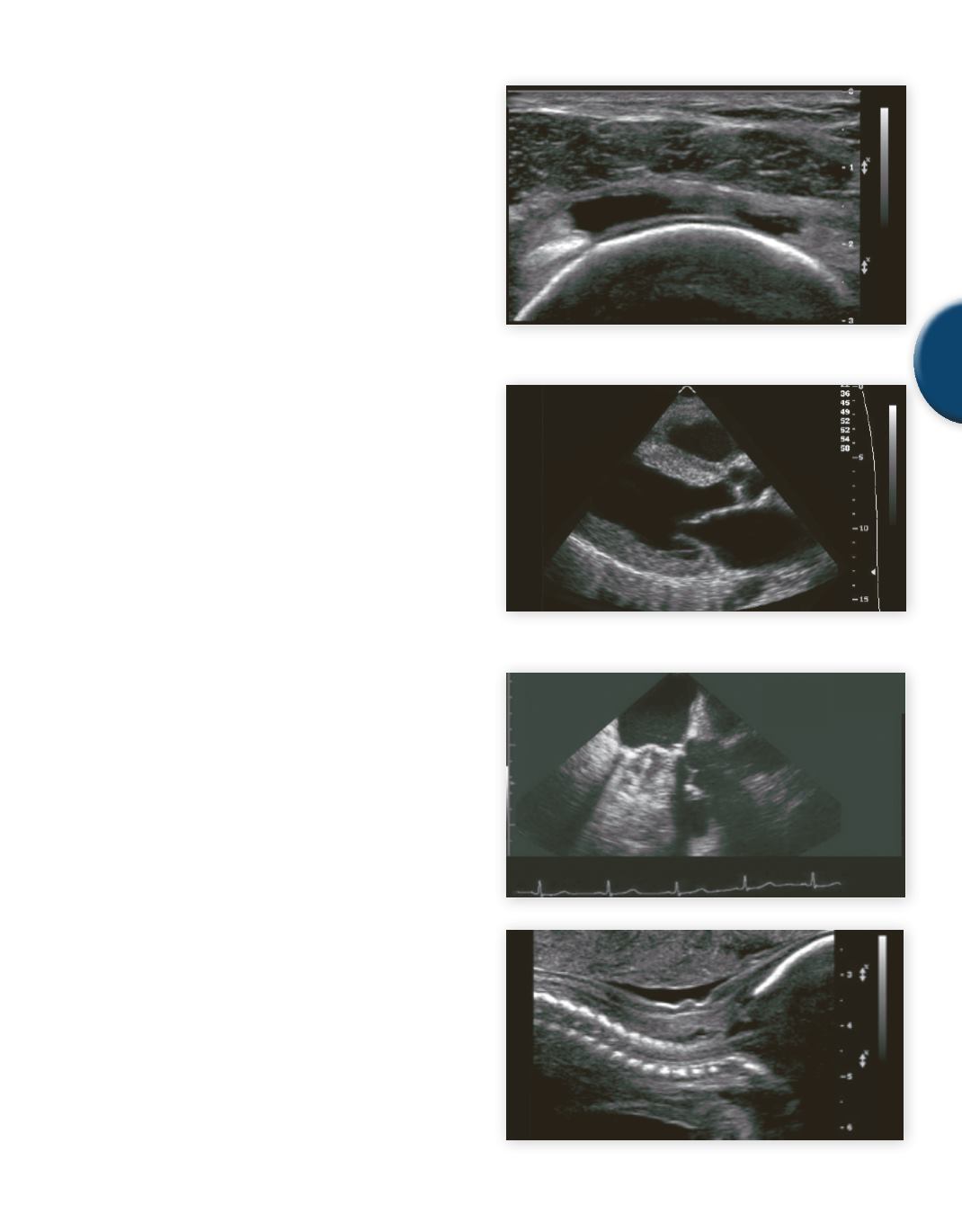
Chapter 3: Attenuation
57
3
9. Reflection in the Body Based on Geometric
Conditions
9.1 Specular Reflection
In Level 1 we discussed three distinct types of reflection which can
occur at an interface, or boundary. Specular reflection is the stron-
gest reflective mode, but is highly angle dependent. Therefore, a
distinctionmust be made between the strength of the reflection and
the strength of the reflection received back to the transducer. For
specular reflection, if the reflected angle returns the signal back in
the receiving path of the ultrasound transducer,then specular reflec-
tion will yield the strongest signals. In contrast, for a pure specular
reflector,if the reflection angle directs the reflected signal away from
the receive path of the transducer, then no signal will be registered.
Notice that we referred to a“pure”specular reflector. A pure specular
reflector results in only specular reflection and virtually no scattering
at all. In practical terms, most structures in the body are not pure
specular reflectors, generating some scattering as well. In essence,
you can think of reflection as a spectrum of effects.
Examples of Specular Reflectors
Some examples of relatively strong specular reflectors are:
• The diaphragm
• Boundaries between organs
• Vessel walls
• Heart walls
• Valve leaflets
• Calcifications
• Fascial sheathing
• The surface of bones and tendons
• The surface of a fluid-filled or air-filled cavity
• Prosthetic valves
• Biopsy needles and catheters
• Pacemakers and pacemaker wires
• Some prosthetic implants
Fig. 22a
Specular reflection from the humeral head in the
shoulder
Fig. 22b
Specular reflection from the anterior leaflet of the
mitral valve and aortic valve cusp
Fig. 22c
Specular reflection from a prosthetic mitral valve
Fig. 22d
Fetal neck: specular reflections from spiny processes
and the cranial bone
SAMPLE PAGE


